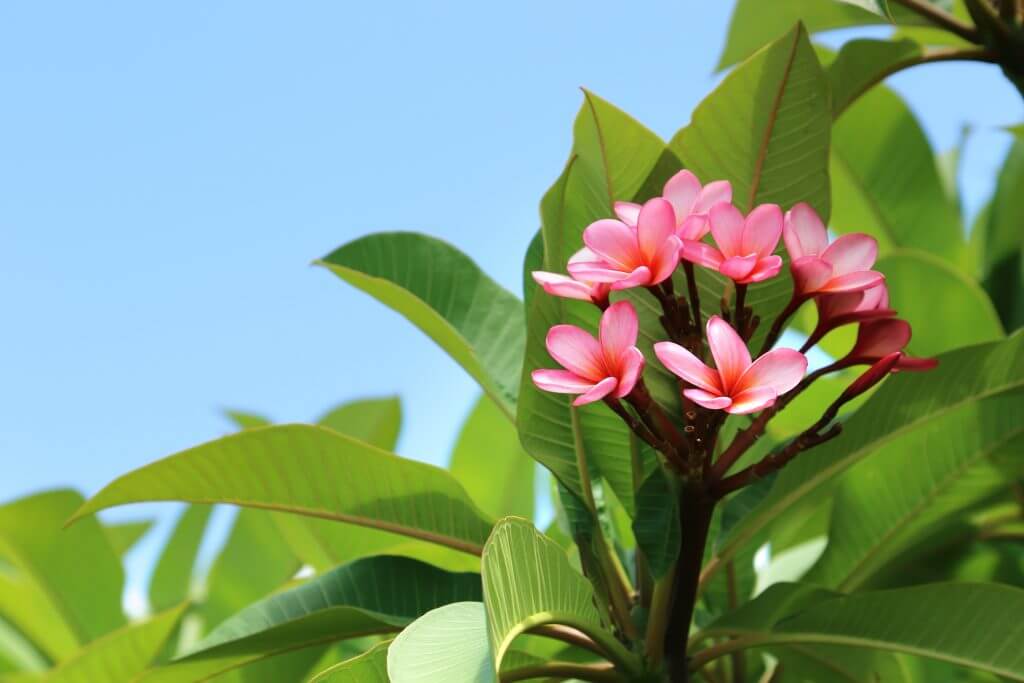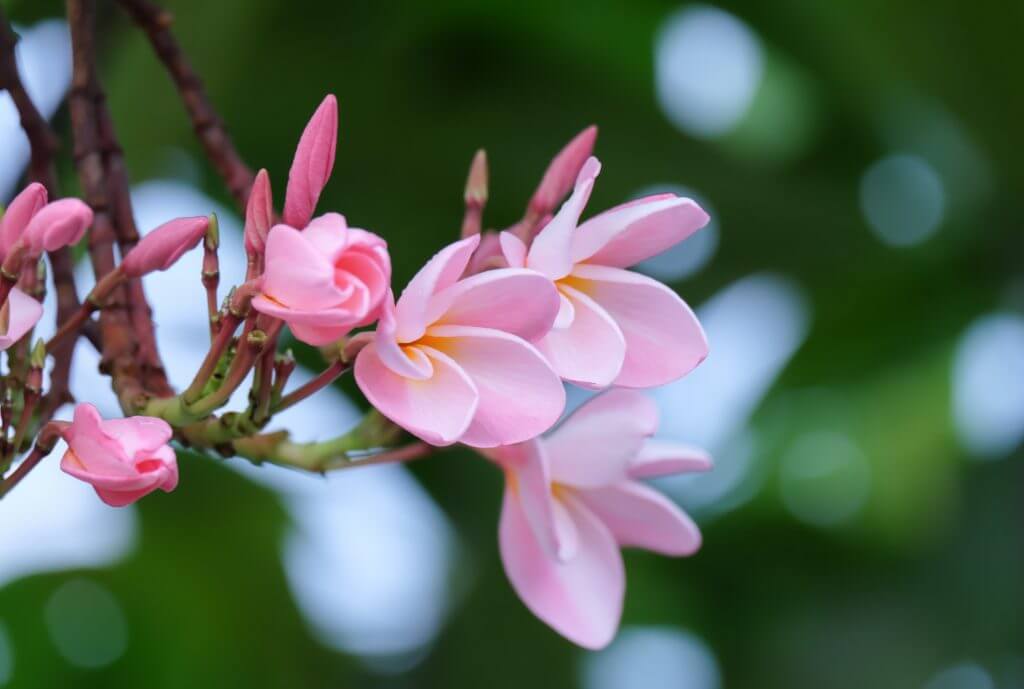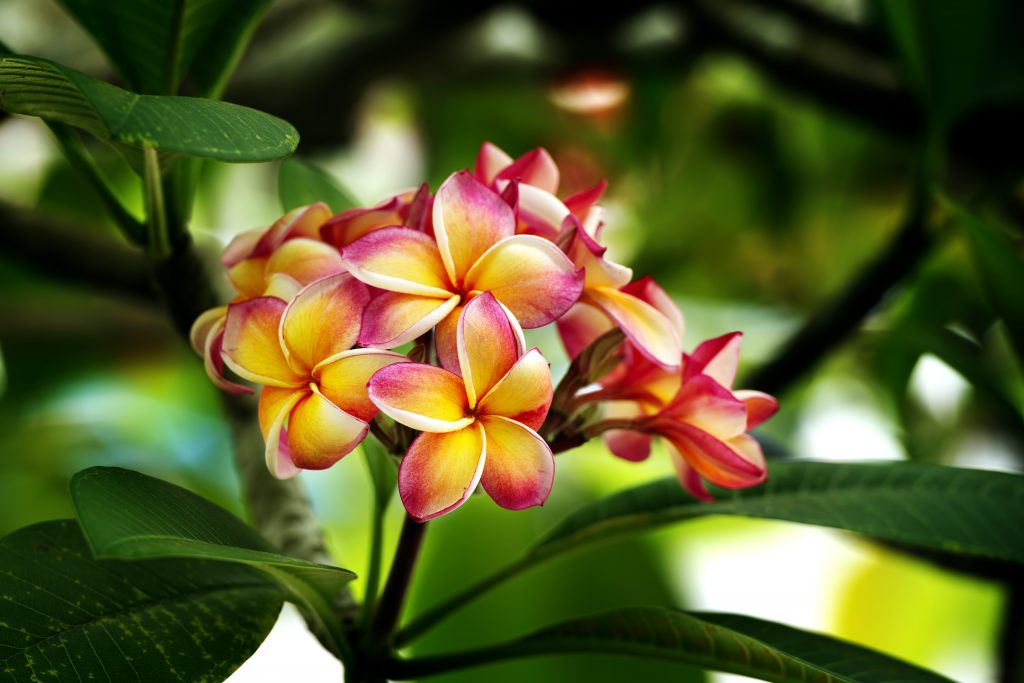Frangipani or Plumeria give such tropical feel to the surroundings, especially when the flowers start to show in their colourful and vibrant splendour.
That is why you may notice that a lot of Hawaiian leis are made with the frangipani flower.
The blooms also give off a pleasant fragrance that wafts in the air when there is a light breeze, especially at night.
Frangipanis are easy to maintain and require less attention unless there are some growth issues.

Basics of Frangipani
Frangipani is the common name of the genus Plumeria, which are flowering shrubs and trees native to the Caribbean, Central America, Mexico, Brazil, and even Florida.
There are about 7 to 8 species of frangipanis.
Frangipani trees are relatively small, growing to about 15 to 20 ft (5 to 6 metres) in height and width.
Some gardeners prefer to keep frangipanis smaller because strong winds can easily break the branches and trunk.
Shrubs grow up to about 13 feet (4 metres).
It has a greenish-greyish scaly bark, and the stems tend to bend and twist as they grow out.
Frangipani leaves are dark green on top and lighter underneath. They can be oval or pointy and can be up to 1 foot (30 cm) long, depending on the variety.
The fragrant frangipani flowers have five spreading petals and appear in clusters.
The frangipani flowers come in a variety of colour and are usually gradient with white, yellow, orange, red, pink, and a combination of these. Some cultivars even have different colours and colour combinations.
Frangipanis grow flowers for long periods in warmer climates, some even have blooms for most of the year.
In Australia, frangipani flowers appear at the start of summer and last until autumn or even late autumn.


Planting Your Frangipani
Frangipanis are planted as cuttings or grown plant.
Make sure that the frangipani cutting has a growth tip of at least 4 to 6 inches (10 to 15 cm) and cleanly cut.
Leave it in a warm and shady place and let the sap seal for a few days. Plant the cuttings in a container with well-draining potting mix or directly on the ground. Support the cuttings if needed.
Plant your frangipani in a sandy and well-draining soil with a little bit of extra organic matter.
Frangipanis love tropical and sub-tropical climates but will survive in colder regions as long as they are sheltered from cold winds and frost.
Place it in full sun, but protect it from strong wind.


How to Take Care of Your Frangipani
Frangipanis require little to no feeding. If you will feed your frangipani, do it in spring or summer, but not later.
Keep your frangipanis watered in warmer months and do not water in the winter or during dormancy.
Frangipanis do not require much pruning but will benefit from it if the branches have grown too much and will tend to break. Cut stems, especially if the area is too windy, or if they are crossing over where they should not be.
Buds will show under the part where you cut the frangipani’s branch unless you cut right at the base where the junction of the stems shoots out.
You can also prune your frangipanis to size.


Problems with Frangipanis
There is frangipani rust which is a fungal infection and generally appears before the leaves fall.
When this is happening, you will notice that there is discolouring on top of the leaves, and orange spots appear on the surface. An appropriate fungicide could solve this issue.
If the leaves have already fallen, remove them as soon as possible and place in a sealed bag to avoid contaminating other plants.
Scale insects could also be an issue with frangipanis. You can use a pesticide to address this.
[elementor-template id=”4604″]
[elementor-template id=”6387″]
